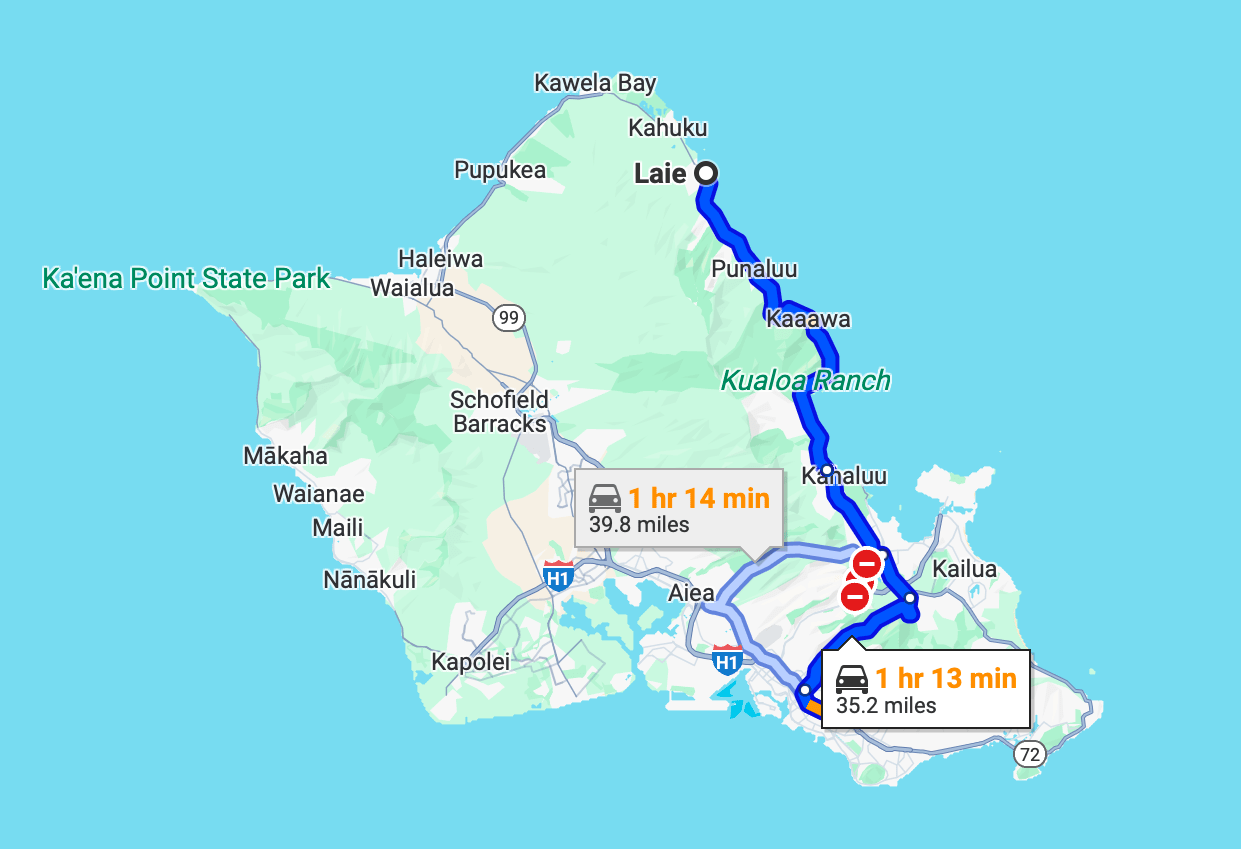The Cost of Supercommuting: Way More Than Just Gas Money

A typical supercommuter spends 90 minutes or more one way commuting to work or school. As the cost of living continues to outpace wage growth, supercommuting is growing in popularity. According to a recent U.S. Census Bureau report, an estimated 5 million people are now supercommuters—up from roughly 3.42 million in 2012.
I hate long commutes. Taking the bus or driving to work was one of my top three annoyances while I was employed.
When I retired in 2012, one of the greatest joys was never having to commute again. Getting back that time, energy, and mental clarity was a truly lifestyle-enhancing benefit of retirement. Then, when the pandemic hit in 2020, millions around the world got to experience that same freedom. Is there any wonder why it’s been so hard to convince workers to go back to the office?
In this post, I want to highlight the hidden toll of supercommuting to work or school. Sure, you’ll spend more on gas if you drive. But that’s just the beginning. So before you buy a more affordable home in exchange for a longer commute, be forewarned: the trade-offs may not be worth it.
My Experience With Supercommuting
After deciding not to pony up a small fortune for a vacation rental in Honolulu, I opted for my family of four to stay with my parents for up to five weeks. They have three free bedrooms in their five-bedroom house, and it’s a home I’ve returned to for 39 years. It feels comfortable to me, but not to all.
Some of you thought this was a good way to save money. Others—mostly women—said it was cruel to subject my wife to such “confinement” for so long. I get it. Staying with your in-laws for more than a few days is a lot to ask, especially without en suite bathrooms or separate kitchens and entrances. And not everybody likes to be in Hawaii during the summer heat.
Still, the cheapest suitable three-bedroom rental I could find cost $16,000 after taxes and fees. A nothing fancy four-bedroom rental, without a pool, which we liked, was $24,000. After owning real estate since 2003, I just can’t bring myself to spend that much on a temporary stay that builds no equity.
To find a compromise, we stayed at my aunt and uncle’s place on the North Shore—up to 1.5 hours away—after 13 days with my parents, to give both my wife and mom a break for nine days. It gave me a break too as I could return to living without worry of doing things in a way that would agitate my mom, e.g. cut fruit on the right side of the sink instead of the left.
The kids were happy wherever they were, so everyone won, well, except for me who had to drive ~2.5 more hours a day for five days.
The False Start
We picked up our kids at 4:55 p.m. Friday from summer school at Punahou to head to Laie for the weekend. All was well—until six minutes in, our five-year-old daughter announced she had to pee. I turned around and went back to school so she wouldn’t have to hold it.
Had we been commuting from my parents’ house, just eight minutes away, I would’ve just kept driving. That’s one unexpected cost of supercommuting—having to manage bodily functions mid-ride. Most adults can uncomfortably hold it for an hour or two. But kids? Not so much.
We finally arrived in Laie an hour and 30 minutes later. The kids napped for 35 minutes, so the trip felt like a breeze to them. Although I was tired, I was also excited to enjoy the freedom of having our own space again.

The Monday Morning Supercommute
After a fun weekend filled with Pokémon Go Fest, Giovanni’s garlic shrimp, and beach walks, reality returned Monday morning.
I passed out by 10 p.m. Sunday after putting the kids down by 9:20 with my wife. I woke up at 2:45 a.m. to get a head start on publishing a new post, responding to comments, and going for a morning walk on the beach.
The kids woke up at 6:30 a.m., and we left by 6:55 to make it to school by 8. Back in Honolulu, we usually leave at 7:40, so the earlier start was uncomfortable for my wife and daughter, who aren’t morning people.
Right away, I could tell the drive would take longer than expected. We were stuck behind a gasoline tanker on a single-lane road for about 15 miles, averaging just 32 mph instead of the usual 40.
About 45 minutes in, I got a text from my wife thanking me for the ride and the peace and quiet. At a stop light, I couldn’t help replying with a GPS screenshot to show where we were—7 minutes behind schedule. Usually, the GPS arrival time was conservative and easy to beat.
But then I made a mistake. I resumed driving while glancing at the screenshot I had sent her instead of the live Apple Maps. That brain fart cost us another 11 minutes. Instead of arriving at 8:06 a.m., we got to school at 8:16. Ugh—I hate being late.

A Place To Hang Out Made Supercommuting More Manageable
At first, I thought I’d just hang out at the beach or mall all day before picking the kids up at 4:55 p.m. My wife also wanted me to pick up some groceries. No problem. There was no way I was going to drive 1.15 hours back to Laie after drop off and then do it again in the afternoon. I figured I’d nap in the car under a banyan tree if I had to.
Then I remembered my parents’ house was only 8 minutes farther. I could write, rest, and manage the renovation of an in-law unit I was working on. Having a home base made the day much more manageable. If I had to also work a full-time job during that commute, I would’ve been completely wiped.
In fact, after dropping off the kids, I spent the day in the city writing a post, recording a solo podcast episode, talking to my parents, grabbing lunch, and squeezing in a quick 15-minute nap.
Then I dealt with the handyman, swung by Whole Foods for groceries, and picked up the kids at 4:55 p.m. The day flew by—and by the end of it, the thought of driving 15 minutes to school and 1 hour and 15 minutes back to Laie during rush hour was the last thing I wanted to do.
The Next Day of Supercommuting (Good Then Bad)
By the second day of supercommuting, I felt more confident. I knew the route better and had learned from my mistakes. I got the kids to school 10 minutes early and shaved 20 minutes off the drive. It felt like a small win. But of course, good things never last.
When I arrived at my parents’ house the plumbers had already shown up early. Then, 30 minutes later, the handyman arrived. In total, I spent nine hours managing five different workers trying to fix up our long-neglected in-law unit. I hate remodeling and swore to never do so again. But here I was, like a masochist, doing it again while I was supposed to be relaxing on vacation.
To make the most of the downtime, I brought my laptop outside and worked on a new post. But with the sun blazing and temps hitting 85 degrees, I was drained by mid-afternoon.
By 4:40 p.m., all I wanted to do was lie down in an air-conditioned room and take a nap. But no such luxury. I had to hop back in the car, drive through rush hour to pick up the kids, then endure another 1 hour and 13 minutes back to Laie.
My zest for life? Gone. After 10 minutes of small talk with the kids about their day, I turned on some music and just listened like a zombie. I didn’t have the energy to keep the conversation going.
By the time we got home, I was toast—just a tired, slightly grumpy dad who wanted nothing more than to kick back and crack open a cold beer.
Positive Thoughts To Gut On Through
Even though I was commuting about 2.5 hours extra a day, I told myself it was worth it—for my wife’s happiness, my mom’s privacy, and even my kids’ resilience. Maybe the longer commute would build their endurance and teach them the value of waking up early.
Perhaps most importantly, my wife appreciated the effort I put in to make her happy. Judging by her FaceTime calls from the beach, she definitely seemed more relaxed and content! With appreciation, I was motivated to keep on supercommuting.
As a father, you do what you can to provide. A little extra effort plus some problem-solving goes a long way to making a suboptimal situation better. Got to think positive! In the past, it never occurred to me commuting from Laie to downtown Honolulu would be an option.
Besides, knowing the supercommuting stint was temporary made it tolerable. My kids had Friday off for the 4th of July, so I only had to supercommute for four days—a total of ~11 hours of additional driving. Oh yeah, but I forgot about adding the two halves of driving up Thursday night and returning Monday morning. So more like 13.5 hours of extra driving.
At first glance, supercommuting might seem like a reasonable trade-off. Save 20–60% on housing and spend an extra two hours and thirty minutes commuting a day? Maybe not so bad, especially if the median home price is above $1 million.
But in addition to hundreds more in gas and transit costs each month, here are other downsides:
- Increased risk of injury or death – More time on the road means more exposure to accidents, especially when driving with kids. I literally saw a car on a residential street near my parent’s house flip upside-down because it got t-boned at an intersection. One of the cars didn’t stop at the stop sign.
- Higher stress and cortisol levels – Bad drivers, traffic jams, and road rage add up, draining your emotional reserves for the day and evening. You might end up developing chronic pain, raise your stress levels, and ultimately, shorten your lifespan as a result.
- Wear and tear on your vehicle – More miles mean more maintenance, especially if your car isn’t ultra-reliable. You’ll also have to replace things more often, like your tires and brakes.
- Greater chance of getting tickets – From parking mistakes to speeding tickets, increased driving time raises your chances of infractions. In turn, your car insurance premiums could go up.
- Reduced happiness and harmony with your significant other – Long commutes drain your energy and patience, which means by the time you get home, you might be more irritable, checked out, or just plain exhausted. Small disagreements can flare up more easily when one or both of you are running on fumes. Over time, the emotional toll of being physically distant and mentally unavailable adds up.
If You Are Going To Regularly Supercommute
If you plan to supercommute regularly, two things are imperative: a safe, reliable car and life insurance.
My wife and I have matching 20-year term life insurance policies, which have provided tremendous peace of mind. I recommend locking in an affordable policy through Policygenius to cover your debts and protect your children until they become adults.
Here in Honolulu, however, we don’t have what I’d consider a safe-enough car for long-term supercommuting. We’re using my dad’s 1997 Toyota Avalon. While it’s a nostalgic beast, it has poor acceleration for evasive driving, a wobbly axle, shaky brakes above 45 mph, no side curtain or rear airbags, no blind spot detectors, no sensors, and no rear camera. I’m not even sure the front airbags work.
As a result, I drive slowly and try to stay extra alert. The one saving grace is that the speed limits between the North Shore and Honolulu are relatively low—35 mph on the single-lane “highway” and 50 mph on the main freeways. So it’s not like mainland highways where people routinely push 70–85 mph.
If we return to this same living and commuting arrangement again, I plan to rent a new car for $100/day. It’ll not only be safer, but it’ll also free up my dad to run errands during the week with his own 28-year-old car. A win-win.
Final Thoughts on Supercommuting
Supercommuting might seem like a smart financial move, especially when housing near work is unaffordable. But before you commit, look beyond the savings. Living in a smaller house or apartment to save time commuting is my preference .
Every hour on the road is an hour not spent with your loved ones. Every stressful drive takes a toll on your mood, focus, and health. And every unexpected delay chips away at your patience—especially when you’re juggling the demands of family life and work.
Personally, a comparable home would need to be at least 70% cheaper to justify adding two extra hours of commuting each day. And even then, I’m not sure the trade-off would be worth the toll on my time, energy, and well-being. The time I get to spend with my kids after school is simply too precious to sacrifice.
If you live within 15 minutes of both your work and your children’s school, consider yourself fortunate. While remote work surged during the pandemic, in-person collaboration has made a strong comeback. As a result, well-located homes in job-centric cities—especially where supply is constrained—may outperform in the future.
If you’re going to supercommute, have a plan. Know your timeline. Understand your reasons. And make sure the trade-off is truly worth it. Because in the end, a cheaper home isn’t worth it if it leaves you drained and hating life.
Readers, are any of you supercommuters? If so, how do you make the long transportation time more bearable? Are there any unexpected benefits to supercommuting beyond saving on housing costs or being closer to family or a better school? I’d love to hear your strategies and insights.
Subscribe To Financial Samurai
Pick up a copy of my USA TODAY national bestseller, Millionaire Milestones: Simple Steps to Seven Figures. I’ve distilled over 30 years of financial experience to help you build more wealth than 94% of the population—and break free sooner.

Listen and subscribe to The Financial Samurai podcast on Apple or Spotify. I interview experts in their respective fields and discuss some of the most interesting topics on this site. Your shares, ratings, and reviews are appreciated.
To expedite your journey to financial freedom, join over 60,000 others and subscribe to the free Financial Samurai newsletter. Financial Samurai is among the largest independently-owned personal finance websites, established in 2009. Everything is written based on firsthand experience and expertise.




